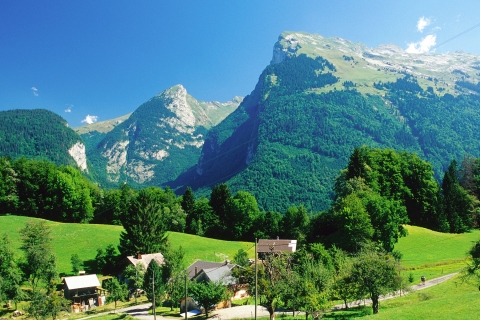Le TĂątre Temperatures: Monthly Averages and Year-Round Insights
On this page, weâll explore Le TĂątreâs temperature statistics in detail, including day and night variations and monthly averages. Weâll also compare the annual temperature to other cities in France.
Monthly Temperature Averages
Depending on the time of the year, temperatures range from comfortable to cold in Le Tùtre. On average, maximum daytime temperatures range from a warm 28°C in August to a cold 11°C in February. Nighttime temperatures can drop, with averages reaching 3°C in February.
The chart below illustrates the average maximum day and minimum night temperatures in Le TĂątre by month:
The coldest temperatures are usually recorded between 4 AM and 6 AM, while the hottest temperatures occur near 3 PM, at the peak of the sun's warmth. August, the cityâs warmest month, receives 241 hours of sunshine.
The chart below shows the average temperature throughout the year:
February, the cityâs coldest month, sees about 68 mm of rainfall spread over roughly 15 days. It records 116 hours of sunshine of sunshine.
Annual Temperatures in France Compared
The map below shows the annual temperature across France. You can also select the different months in case you are interested in a specific month.
 very warm
very warm
 warm
warm
 pleasant
pleasant
 moderate
moderate
 cold
cold
 very cold
very cold
Le TĂątre Temperatures Compared World Wide
Le TĂątreâs average annual maximum temperature is 19°C. Letâs compare this with some popular tourist destinations:
In Lisbon, Portugal, the average annual temperature is 21°C, offering warm summers and mild, rainy winters.
In contrast, in Oslo, Norway, the average annual temperature is significantly lower at 10°C, with mild summers and cold winters.
Chicago, USA, has a significant seasonal range, with an average annual temperature of 15°C.
Adelaide, Australia, enjoys warm summers and mild winters, with an average annual temperature of 21°C.
How does the temperature feel?
Humidity is an essential factor in how you experience temperature. When a warm period is accompanied by high humidity, it results in a higher perceived temperature. This is especially true when temperatures exceed 25°C, as it can cause greater discomfort.
On the other hand, in cooler months, especially when temperatures dip below 10°C, high humidity can intensify the cold. This makes the air feel much colder than it really is.
In Le Tùtre, during the coolest month, February, you will experience 83% humidity, which is considered very high. This is accompanied by an average maximum temperature of 12°C. In the warmest month, August, the humidity is 76% combined with an average maximum temperature of 28°C, which creates a high-feel temperature. Explore our detailed page on humidity levels for further details.
How are these Temperatures Measured?
Generally, temperature data depicting climate is usually given over a 30-year average in order to reduce short-term fluctuations and reveal better long-term trends in climate conditions.
This temperature data is taken from land-based thermometers, ocean buoys, ships, and satellites. These measurements are transmitted to weather stations and climate centers around the globe where they are processed, averaged, and analyzed in order to monitor the trends and create climate models.
Sea vs. Land Temperatures
The influence of nearby oceans or large water bodies significantly affects local temperatures:
- Ocean Influence: Coastal regions tend to have more stable temperatures, as large bodies of water absorb and release heat slowly. This often results in milder winters and cooler summers compared to inland areas.
- Continental Climates: Landmasses well away from large bodies of water tend to show greater extremes in temperature, having hotter summers and colder winters because of the absence of water as a moderating influence.
For more detailed information about Le TĂątreâs weather, including monthly rainfall, sunshine hours, and humidity levels, visit our Le TĂątre climate page.
Current temperature in Le TĂątre
almost clear and no rain
clear and no rain
clear and no rain




